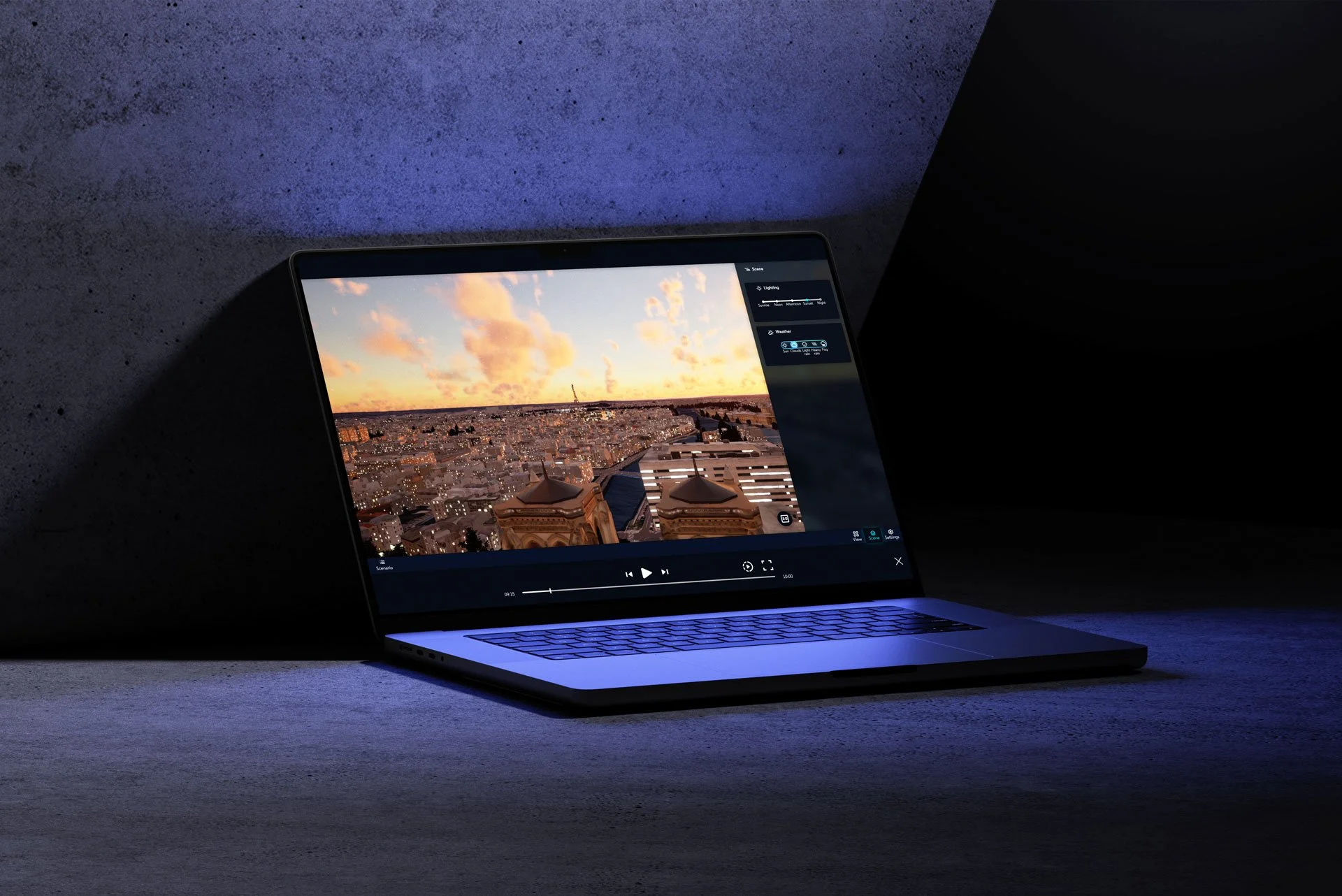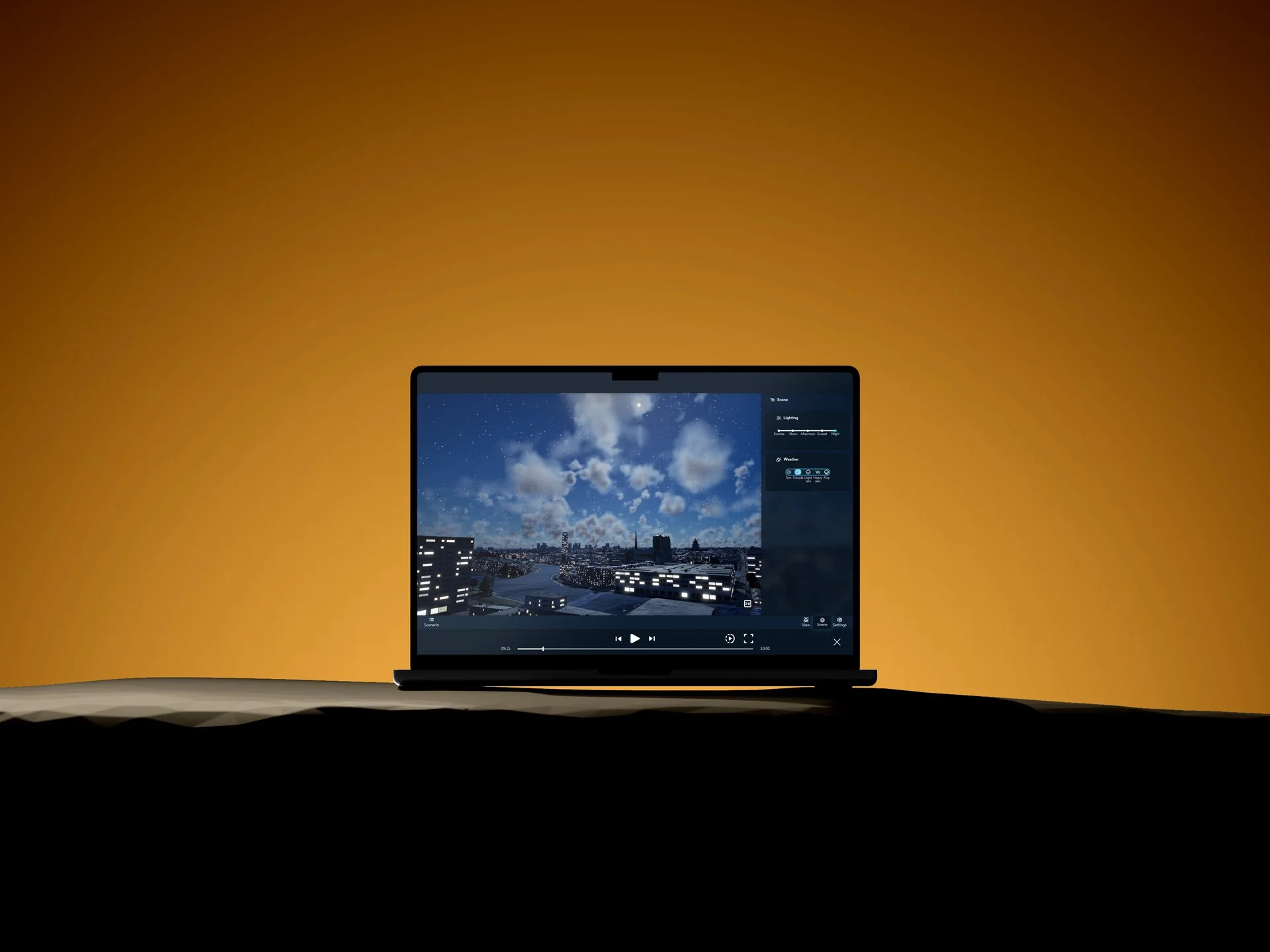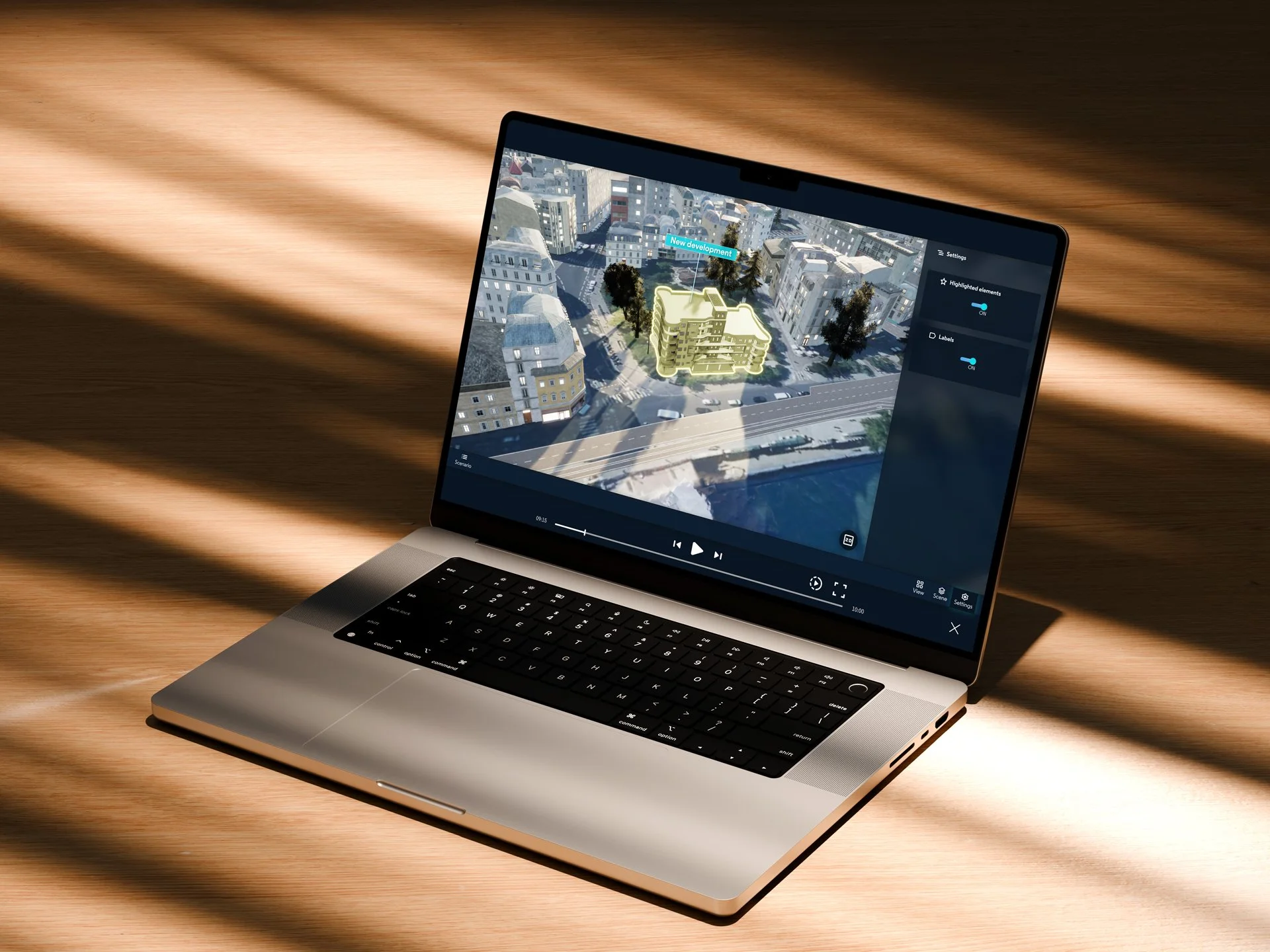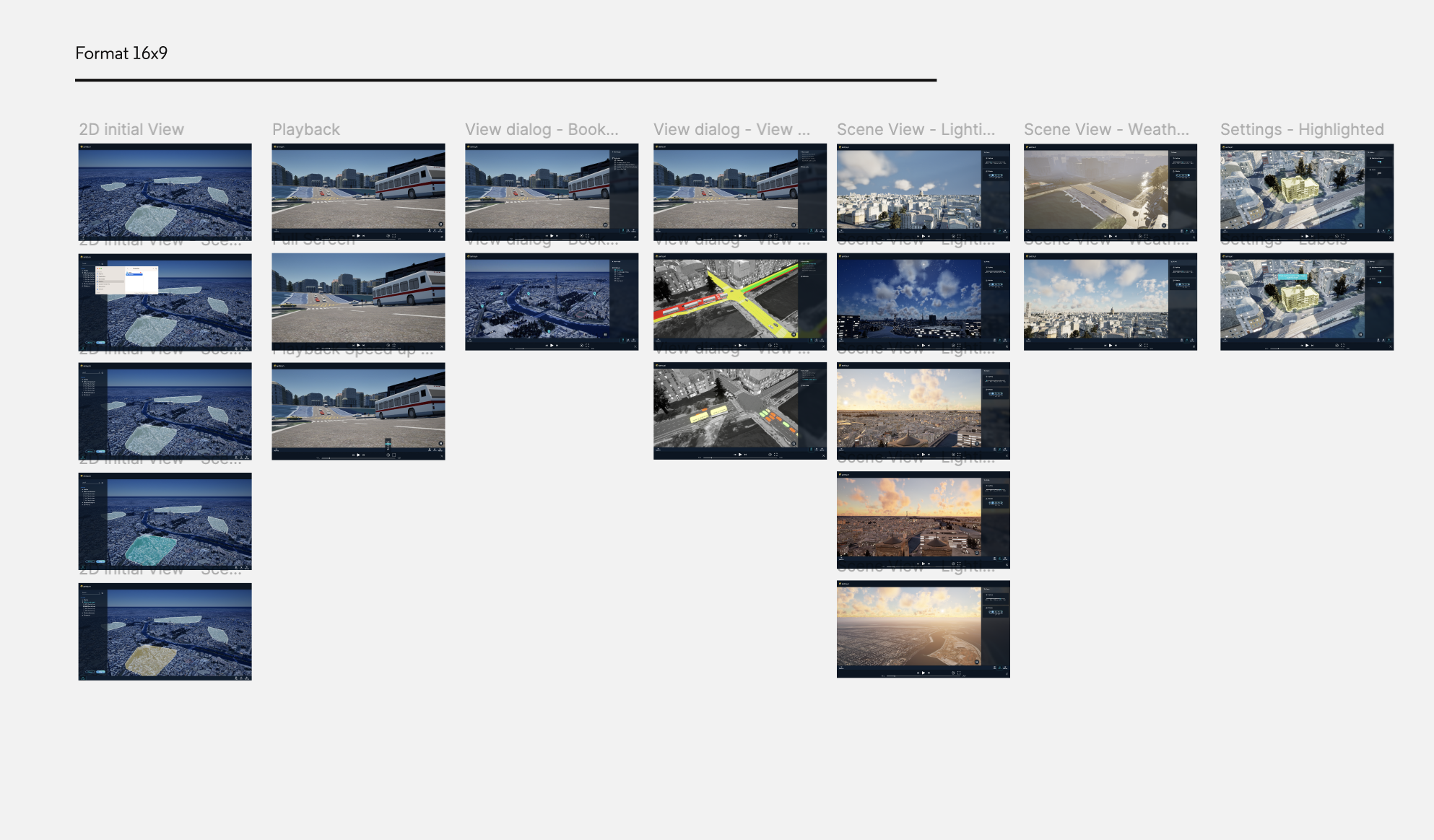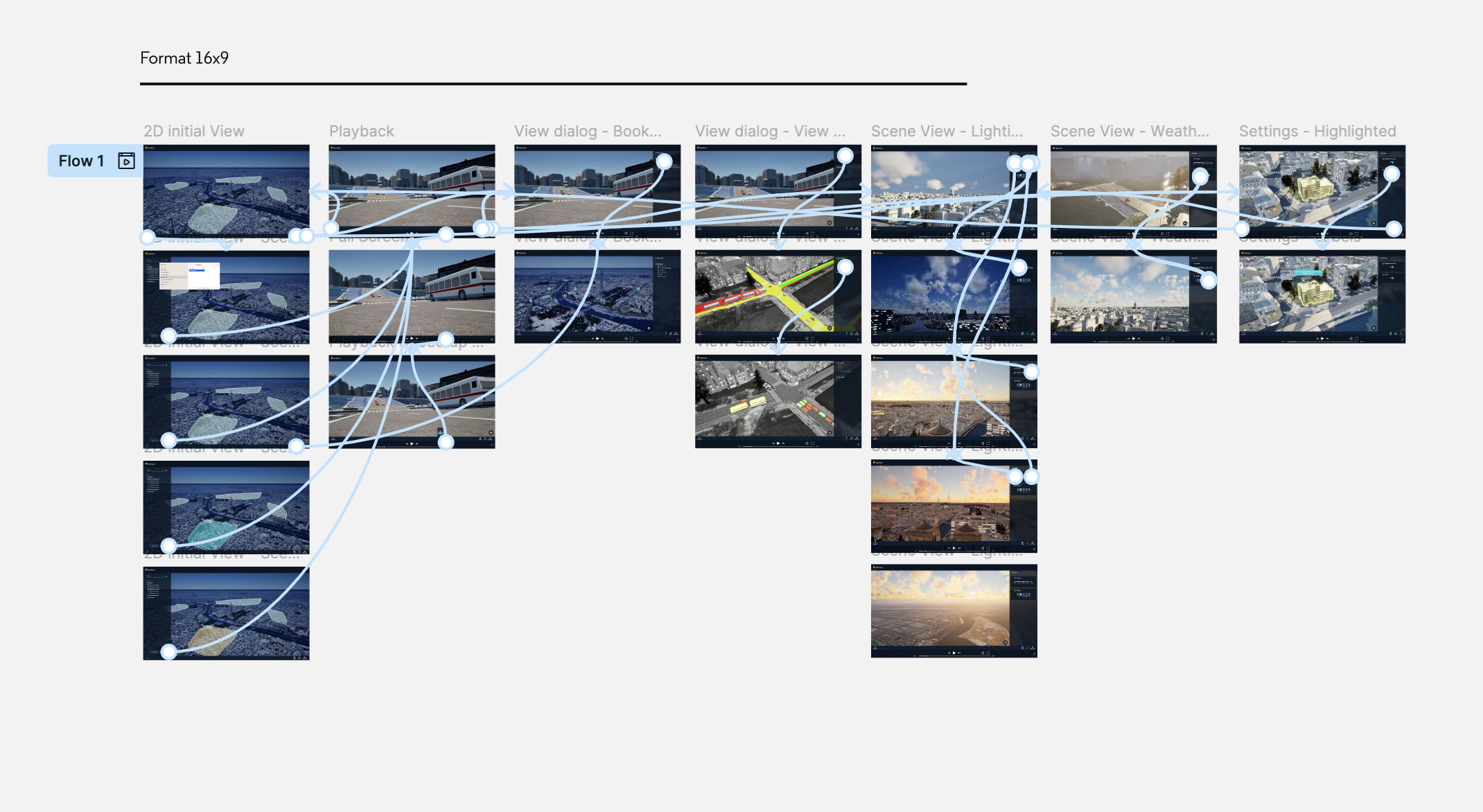Real-World Simulation platform
Desktop-only interactive visualization interface for a mobility simulation platform, developed for a government transportation authority in the Middle East. The tool enables planners to seamlessly explore real-world 3D models of large-scale transport networks, run complex scenario analyses, visualize outcomes, and make data-driven decisions to improve urban mobility infrastructure.
Year
2024
Client
Aimsun – Undisclosed client
Sector
Urban Mobility / Transport Simulation
Challenge
Designing a complex 3D visualization interface that balances technical precision with usability, while adapting quickly to evolving client requirements and feedback.
My Role
Sole UX/UI Designer, I’ve led the entire design process from research and ideation to prototyping and final UI delivery.
Project Time
6 weeks
Competitive analysis
This platform is quite unique, with no direct competitors available. To guide the design, I drew some inspiration from 3D visualization tools like Unreal Engine, especially their methods for handling complex spatial navigation and layered information. I also reviewed common design patterns in technical and simulation software to ensure the interface remained clear and user-friendly despite the complexity of the data.
And I’ve also tried to tie it visually to our in-house simulation software, especially the side panels with layers, etc.
User flow & task mapping
The user flow and task mapping took some time to refine as we first had a few internal meetings with a project manager, product and development teams to ensure everyone is clear on the technical limitations.
We then had several detailed meetings with the client, where I gathered key insights and requirements, which I then refined again in close discussions with our project manager and the product team.
This collaborative approach ensured that the flow accurately reflects real user needs and supports smooth navigation through complex simulation tasks. The resulting flow outlines a clear path from scenario selection to simulation playback and review, balancing usability with the technical demands of the platform.
Brand design & style library
The brand design centers around a dark-toned color palette accented with bright blues, creating a high-tech and professional feel that aligns with the client’s vision of the simulation platform. Typography is a custom font from the Aimsun branding kit, providing a distinctive yet consistent visual identity across the interface.
Iconography is crafted to feel modern and approachable, emphasizing clarity and ease of use to help users quickly interpret complex data and navigation controls. The interface employs modular UI components designed for scalability and adaptability, enabling seamless updates as client needs evolve.
Inspired by both the in-house simulation software and advanced 3D visualization tools like Unreal Engine, the layout incorporates layered side panels and intuitive spatial navigation, balancing technical precision with user-friendly interaction. This style library ensures a cohesive, flexible, and professional user experience for a modern urban mobility simulation environment.
High fidelity mockups and prototype
Since the user flow was already finalized and everyone was aligned on how users would navigate the platform, I skipped the low-fidelity wireframes to save time. After a few rounds of refining the visual style and tone, I jumped straight into creating high-fidelity mockups. This helped me focus on polishing the look and feel, as well as the details of interactions, without losing momentum.
Working directly in high fidelity also made it easier to communicate the final vision to the team and stakeholders, and quickly gather feedback on the actual interface. Given the tight project timeline, this approach was efficient and kept us on track while still delivering a clear, well-designed prototype.
The design balances technical precision with usability, enabling the client to explore large-scale urban mobility data confidently and efficiently. The modular style library and interface components provide a strong foundation for future enhancements, allowing the platform to evolve alongside client needs and internal technical improvements to simulation tools.
